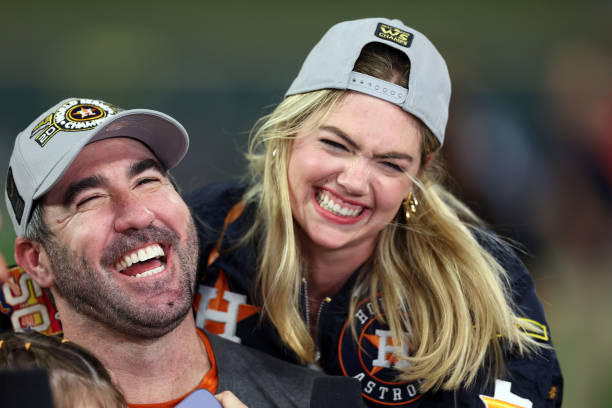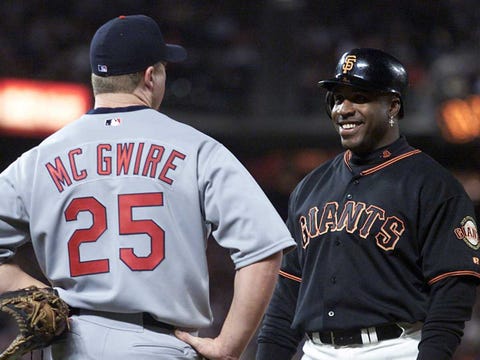The baseball strike of 1994 was a damaging and disrespectful blow to the loyal MLB fans who were becoming increasingly disenchanted with Americas Pastime during the latter half of the 1990s. The strike interrupted what was becoming a magical year in baseball, as a number of longstanding records were within reach. The abrupt end to a potentially epic season left a sour taste in the mouths of fans and strained the relationship between players and league officials.
Pres. Clinton’s Remarks Regarding the 1994-1995 MLB Strike
This is video footage of President Clinton’s remarks to the press after meeting with Major League Baseball representatives regarding the 1994-1995 Major League Baseball strike. This footage is official public record produced by the White House Television (WHTV) crew, provided by the Clinton Presidential Library. Date: February 7, 1995 Location: Press Briefing Room.
Support for the game was lukewarm during the post-strike years and the future of pro baseball was in limbo, until 1998 when an historic home run race between St. Louis Cardinals slugger Mark McGwire and Chicago Cubs Dominican destroyer Sammy Sosa electrified baseball, reinvigorated the fans and obliterated Roger Maris single-season homerun record of 61.
Sosa joins McGwire in passing Maris
9/13/98: Sammy Sosa hits his second homer of the day, his 62nd of the year, joining Mark McGwire in passing Roger Maris’ 61 home run record Check out http://MLB.com/video for more! About MLB.com: About MLB.com: Baseball Commissioner Allan H.
Two men were able to put the future of baseball on their backs and elevate the sport to a level of popularity and interest and excitement that it hadnt experienced in decades. McGwire crossed the finish line first and finished with 70 jacks, a record Barry Bonds later broke in 2001 when he hit 73. Sosa finished with 66.
Unfortunately, they also became the scapegoats and posterchildren for a performancing enhancing drug epidemic that ripped through baseball. While it made the sport billions of dollars and raised its profile, the subsequent Congressional Hearings and media attacks, alienated the same players who were worshipped for their feats. They were considered a stain on the integrity of the sport in the eyes of some people.
Sammy Sosas 609 career homers (ninth place all-time) and McGwires 583 homers, which places him 11th on the all-time dinger list werent enough to survive the witchhunt implemented by Commissioner Bud Selig, MLB and the US Government. Sadly, both players have been blackballed from induction into Cooperstown.
This MLB season marks the 20th anniversary of the greatest home run chase in baseball history. While at the All-Star weekend festivities in Washington DC, I got a first-hand recollection of that glorious year from some of baseballs most prominent figures.
Houston Astros ace Justin Verlander was a rising 15-year-old pitcher from Virginia with a passion for baseball on his way to attending Old Dominion where he would obliterate school records before being drafted by the Detroit Tigers with the second overall pick in the 2004 MLB Draft.
Justin Verlander: I dont know if it impacted my love for the game, but I do know that baseball needed a jolt at that time and those guys really provided that feeling of excitement that some fans who had stepped away for a while after the 94 strike, that were really baseball fans…it lured them back in. I just remember it being great for the game.
Long-time New York baseball writer Jon Heyman is an insider for MLB Network who started covering baseball in the early 80s. Hes witnessed the greatest baseball moments of the modern era often up close and in person. Heyman is one of baseballs elite and tenured media members who have experienced sleepless nights wrestling with the Cooperstown validity of PED guys with a lock on MLB records.
Jon Heyman: At the time it was fantastic. We loved it. The guys were great players. Sammy was very cooperative with the press and excited, which made covering that chase of Roger Maris record fun for everyone involved. McGwire was a little bit more to himself but I didn’t blame him. He was concentrating on trying to get that record and it was very very thrilling for baseball at the time.
As we know, history has changed the story a little bit (with PEDs) but you certainly have to give them some credit for helping bring back the game because people really got into it.
Los Angeles Dodgers All-Star outfielder Matt Kemp was a 13-year-old two-sport athlete preparing to attend Midwest City High School in Oklahoma, when McGwire and Sosa were making the news every night.
Matt Kemp: I was only 13, but just watching those guys go at it was a fun time, man. I think some guys dont remember how big that season was, but when youre 12 or 13 and developing a love for baseball you never forget. And to get to be around those guys as a pro… Mark (McGwire) eventually became one of my coaches and just to get to be around those guys and in the same clubhouse for a couple of years is really cool.
It didnt matter if McGwire or Sosa won, we just wanted to see bombs, man. We just wanted to see a show and they always put on a show.
Buck Martinez is a former MLB catcher and manager, whose baseball career spans six decades, dating back to his MLB debut in 1969 for the Kansas City Royals. Buck played 17 seasons for KC, the Milwaukee Brewers and Toronto Blue Jays. He also managed Toronto from 2001-02, the years right after McGwire and Sosa saved the game.
Martinez is currently the television play-by-play announcer for the Toronto Blue Jays and a respected national radio and TV broadcaster.
Buck Martinez: Now given what we know about what was going on then with PEDS, its a little different in retrospect, but at the time it was very exciting. I was in Houston working with Gary Thorne when Sosa hit his 66th homer in the Astrodome and within minutes McGwire hit his 66th in St. Louis so it was back and forth every game, every day. But it was a special time, no question about it and it certainly got a lot of people more interested in the sport of baseball in that aspect.
It was amazing to see it, but we also found out that there was a lot of outside help and I come from a generation where Willie Mays was my idol and I watched Hank Aaron and all the players of that golden era. My favorite was Harmon Killebrew and they all did it the right way so its unfortunate what a lot of these players are experiencing now, but at the time it was very special for baseball. It rekindled a lot of peoples interests.
Informed baseball minds consider Tony Clark, executive director of the Major League Baseball Players Association, one of the most important people in MLB. Clark played 16 years in the MLB from 1995-2009 and was a rising young star for the Detroit Tigers when McGwire and Sosa were making baseball the center of ESPNs daily highlights.
Tony Clark: The 98 home run chase was unlike anything Ive ever seen. The crowds were at the fields early and attentively watching batting practice. Then the players, once the lights came on, delivering exactly everything that everybody thought was going to happen.
I was fortunate that year being in the American League, I had the privilege of playing both Sosas Cubs team and McGwires St. Louis team in interleague play, so I had a chance to see the folks, 40,000 strong come out and watch McGwire take BP and then I had a chance up close and personal to see Sosa in June when he hit 20 something homers in one month, so that was special. They were like rock stars on tour. The excitement around the game and what they were doing was truly remarkable.
Its unfortunate that its not celebrated the way we would have hoped it would be for all the reasons, I think everybody is concerned about, aware of and have voiced but the truth is it was unlike anything Ive ever seen.
I think 98 was well ahead of moneyball and any number of new concepts, implementations, changes and adjustments that we’ve seen in the game over the last two decades. So I don’t know if it changed the perspective of many, but most folks acknowledge that it was a collection of guys that had just played the game at a much different level.
I recall it being must see TV, so when the games were on they were even on in the various locker rooms across the league and at the end of the day folks jumping on to see who did what. It was one of those rare moments where players also became fans.


